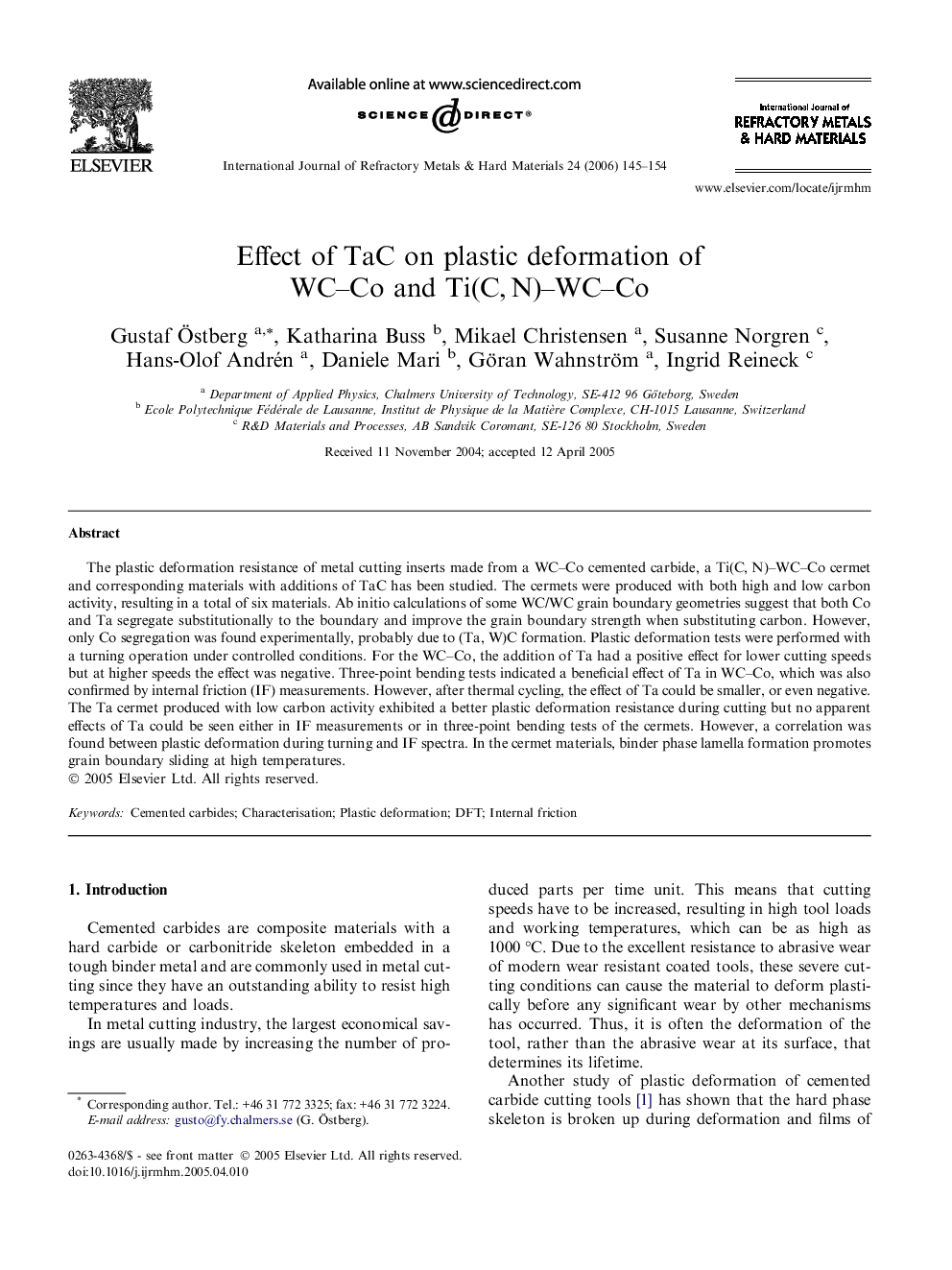| Article ID | Journal | Published Year | Pages | File Type |
|---|---|---|---|---|
| 1604701 | International Journal of Refractory Metals and Hard Materials | 2006 | 10 Pages |
The plastic deformation resistance of metal cutting inserts made from a WC–Co cemented carbide, a Ti(C, N)–WC–Co cermet and corresponding materials with additions of TaC has been studied. The cermets were produced with both high and low carbon activity, resulting in a total of six materials. Ab initio calculations of some WC/WC grain boundary geometries suggest that both Co and Ta segregate substitutionally to the boundary and improve the grain boundary strength when substituting carbon. However, only Co segregation was found experimentally, probably due to (Ta, W)C formation. Plastic deformation tests were performed with a turning operation under controlled conditions. For the WC–Co, the addition of Ta had a positive effect for lower cutting speeds but at higher speeds the effect was negative. Three-point bending tests indicated a beneficial effect of Ta in WC–Co, which was also confirmed by internal friction (IF) measurements. However, after thermal cycling, the effect of Ta could be smaller, or even negative. The Ta cermet produced with low carbon activity exhibited a better plastic deformation resistance during cutting but no apparent effects of Ta could be seen either in IF measurements or in three-point bending tests of the cermets. However, a correlation was found between plastic deformation during turning and IF spectra. In the cermet materials, binder phase lamella formation promotes grain boundary sliding at high temperatures.
